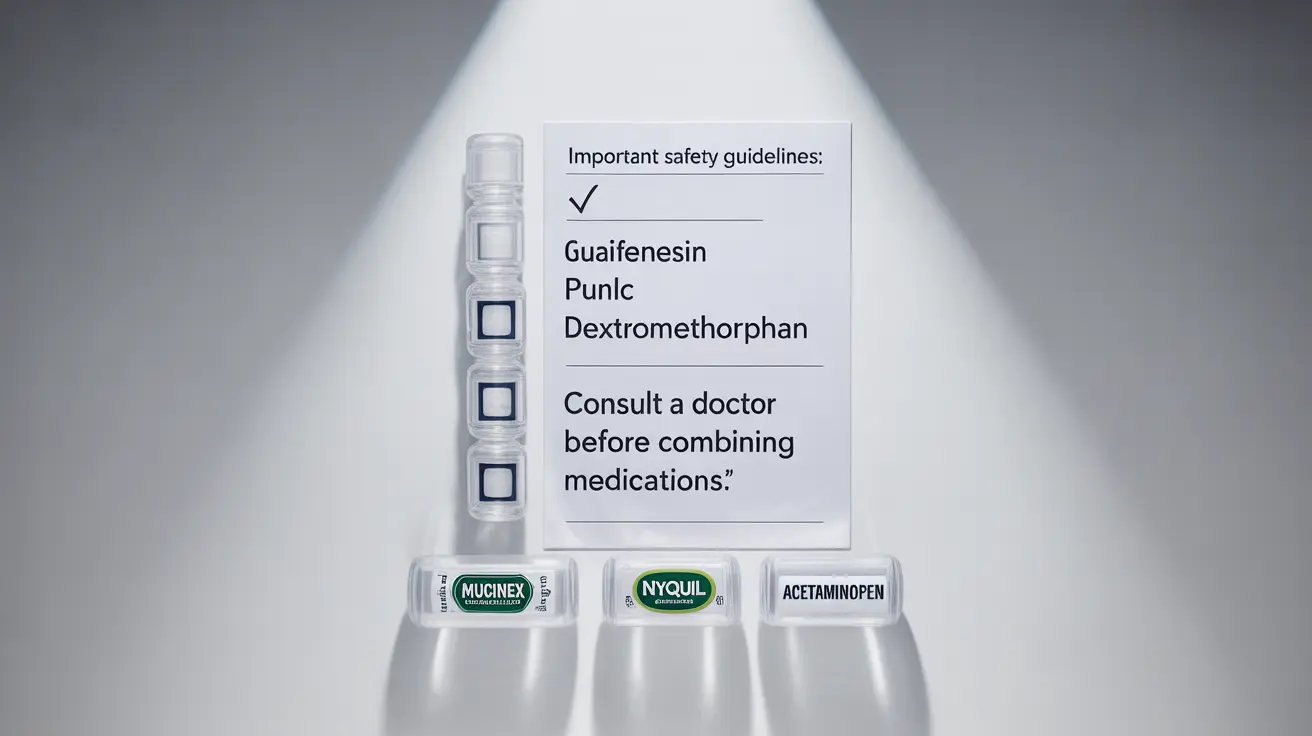When battling cold and flu symptoms, many people wonder about combining different over-the-counter medications to find relief. Understanding whether you can safely take Mucinex and NyQuil together is crucial for effective symptom management while avoiding potentially dangerous drug interactions.
This comprehensive guide will explore the safety considerations, potential risks, and best practices for using these common cold and flu medications together.
Understanding Mucinex and NyQuil Components
Before combining these medications, it's essential to understand what each contains. Mucinex's main ingredient is guaifenesin, which helps thin and loosen mucus. However, Mucinex DM also contains dextromethorphan, a cough suppressant. NyQuil typically contains multiple active ingredients, including:
- Acetaminophen (pain reliever and fever reducer)
- Dextromethorphan (cough suppressant)
- Doxylamine succinate (antihistamine)
Safety Considerations When Combining Medications
The safety of taking Mucinex and NyQuil together largely depends on the specific formulations you're using. Regular Mucinex (containing only guaifenesin) can generally be taken with NyQuil, but Mucinex DM requires more careful consideration due to overlapping ingredients.
Potential Risks and Interactions
When combining these medications, be aware of these primary concerns:
- Doubled doses of dextromethorphan if using Mucinex DM with NyQuil
- Risk of acetaminophen overdose if taking other pain relievers
- Increased drowsiness from combined sedating effects
- Possible intensification of side effects
Proper Timing and Dosage Guidelines
If you choose to use both medications, proper timing is crucial for safe usage:
- Space doses at least 4-6 hours apart
- Take Mucinex during the day for mucus relief
- Reserve NyQuil for nighttime use
- Never exceed recommended daily doses of any active ingredient
Guidelines for Safe Usage
Follow these important safety guidelines when using these medications:
- Read all medication labels carefully
- Track total daily intake of all active ingredients
- Avoid additional medications containing the same ingredients
- Consult a healthcare provider if uncertain about combinations
- Stop use and seek medical attention if experiencing adverse effects
Frequently Asked Questions
- Is it safe to take Mucinex and NyQuil together for cold and flu symptoms?
The safety depends on the specific Mucinex formula you're using. Regular Mucinex (guaifenesin only) can generally be taken with NyQuil, but Mucinex DM should be used with caution due to overlapping ingredients like dextromethorphan.
- What are the risks of combining Mucinex DM and NyQuil due to overlapping ingredients?
The main risks include potential overdose of dextromethorphan, which could lead to increased side effects such as dizziness, drowsiness, and confusion. This combination could also intensify sedating effects.
- How should I space doses if I want to take Mucinex during the day and NyQuil at night?
Space doses at least 4-6 hours apart. Take Mucinex during daytime hours and save NyQuil for bedtime to maintain proper spacing between doses and avoid overlap of active ingredients.
- Can taking both Mucinex and NyQuil cause drowsiness or other side effects?
Yes, combining these medications can increase drowsiness, especially if using Mucinex DM. Other potential side effects include dizziness, dry mouth, and confusion. The risk increases when both medications contain overlapping ingredients.
- How can I avoid acetaminophen overdose when using Mucinex and Nyquil together?
Check all medication labels for acetaminophen content, keep track of total daily intake, and avoid other medications containing acetaminophen. Never exceed 4,000mg of acetaminophen in 24 hours, and consult a healthcare provider if unsure about proper dosing.




